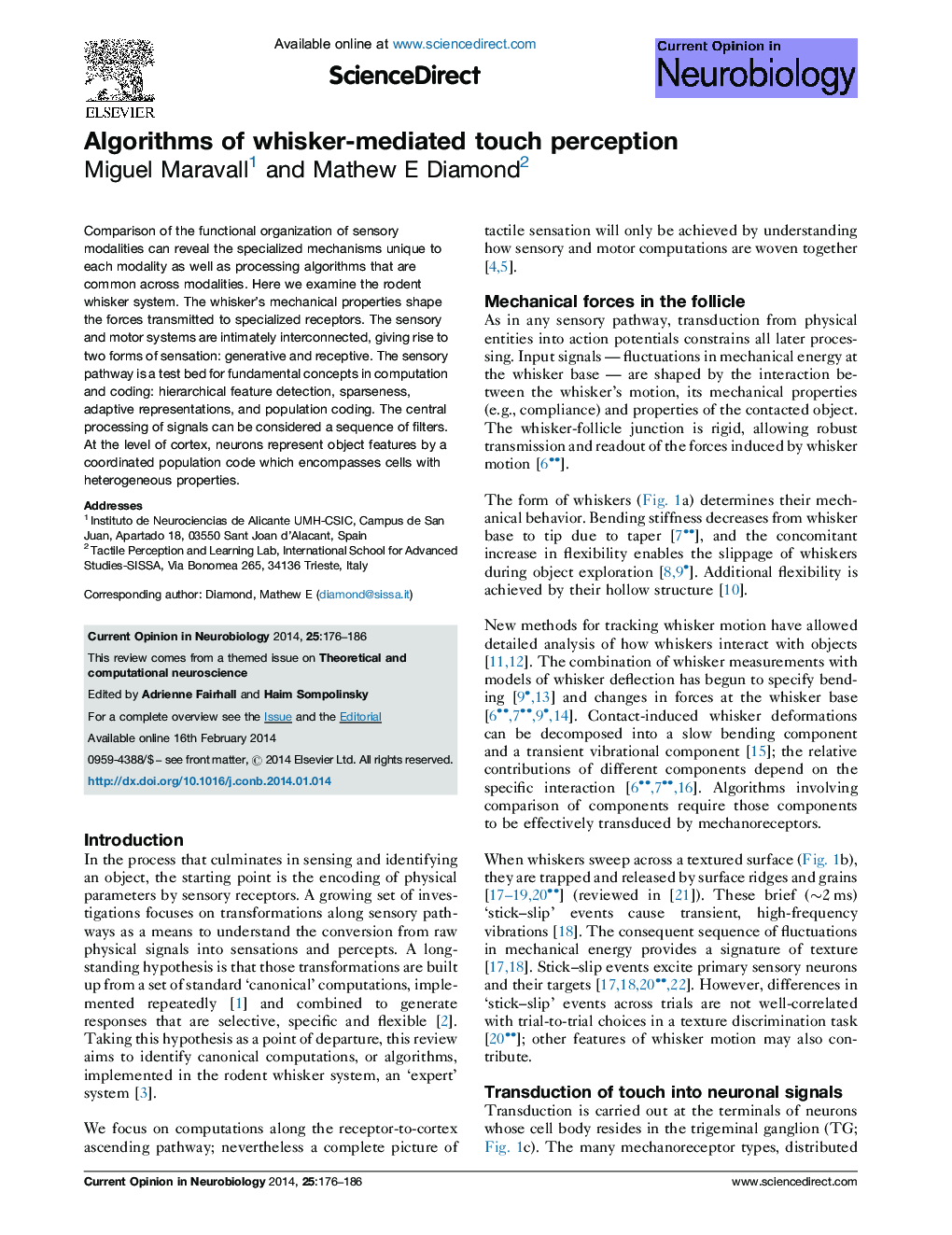| Article ID | Journal | Published Year | Pages | File Type |
|---|---|---|---|---|
| 6266570 | Current Opinion in Neurobiology | 2014 | 11 Pages |
â¢Whisker follicle forces are shaped by whisker motion and mechanical properties.â¢Forces are encoded by temporally precise, heterogeneous primary afferent responses.â¢As in other modalities, neurons along the pathway can be treated as feature detectors.â¢Heterogeneous and context-dependent responses are observed at each pathway stage.â¢Variable single-neuron behavior underpins robust population codes.
Comparison of the functional organization of sensory modalities can reveal the specialized mechanisms unique to each modality as well as processing algorithms that are common across modalities. Here we examine the rodent whisker system. The whisker's mechanical properties shape the forces transmitted to specialized receptors. The sensory and motor systems are intimately interconnected, giving rise to two forms of sensation: generative and receptive. The sensory pathway is a test bed for fundamental concepts in computation and coding: hierarchical feature detection, sparseness, adaptive representations, and population coding. The central processing of signals can be considered a sequence of filters. At the level of cortex, neurons represent object features by a coordinated population code which encompasses cells with heterogeneous properties.
